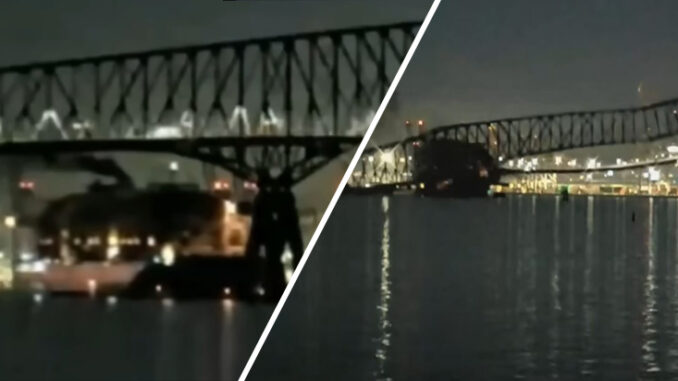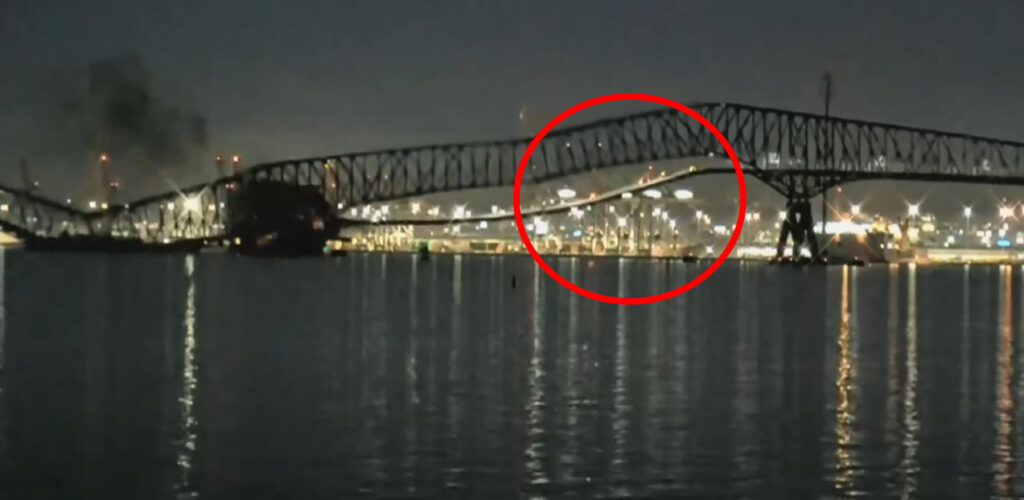
On the fateful evening of March 26, 2024, at approximately 1:28 a.m. EDT, the Francis Scott Key Bridge in Baltimore, Maryland, bore witness to a catastrophic collapse that shook the region to its core.
In the wake of the catastrophic collapse of the Francis Scott Key Bridge in Baltimore, Maryland, a narrative of chaos and heroism emerges. The incident, which occurred after a cargo ship suffered a total power failure, has left a trail of devastation, claiming lives and disrupting vital transportation and trade routes along the US eastern Seaboard. As authorities scramble to piece together the events leading up to the collapse, various theories and speculations have flooded social media platforms, igniting debates about the true cause behind this disaster.
The Mayday Call: A Lifesaving Alert
Eyewitness accounts and official reports indicate that the disaster was preceded by a distress call from the cargo ship, Dali, as it lost control of its steering and propulsion systems. The crew swiftly dropped anchor and issued a mayday signal, prompting the bridge controller to halt vehicular traffic, thereby averting potential mass casualties. However, tragically, a construction crew working on the bridge at the time bore the brunt of the impact, with six workers presumed dead in the aftermath.

Speculations and Investigations
In the aftermath of the collapse, speculation ran rampant across social media platforms, with some individuals suggesting the possibility of a terror or cyber attack. Claims emerged that the ship, purportedly regaining power, deliberately steered towards the bridge’s base. The sudden restoration of lights amidst billowing black smoke fueled these theories. However, authorities swiftly refuted these claims, asserting that a diesel backup generator had kicked in, restoring electrical systems but not engine functionality. The black smoke, they clarified, emanated from the generator, not the ship’s engine.
Baltimore’s police commissioner, the Maryland governor, and the FBI collectively dispelled notions of terrorism, emphasizing ongoing investigations into the incident’s root cause. Revelations about the Dali’s prior collision in 2016, where it rammed into a port wall in Belgium, have added a layer of scrutiny to the vessel’s history and maintenance practices.
Disruption of Vital Trade Routes
The Francis Scott Key Bridge, a pivotal artery connecting major cities such as Washington, Baltimore, Philadelphia, and New York, served as a lifeline for both commuters and cargo shipments. As the busiest bridge for car shipments in the United States, handling over 750,000 vehicles in 2023 alone, its collapse has dealt a severe blow to logistical operations and economic activity in the region. Moreover, the bridge’s strategic location as one of the busiest ports on the US eastern Seaboard for cargo ships has ground maritime commerce to a halt, exacerbating supply chain disruptions and logistical challenges.
A Call for Accountability and Resilience
As the dust settles and investigations intensify, calls for accountability and resilience echo throughout Baltimore and beyond. The tragic loss of life and the crippling impact on transportation and trade underscore the critical importance of robust infrastructure, stringent safety protocols, and vigilant oversight in safeguarding public well-being and economic vitality.
In the face of adversity, communities unite, drawing strength from acts of courage and solidarity. As Baltimore mourns its losses and navigates the arduous road to recovery, the resolve to rebuild stronger and more resilient infrastructure serves as a beacon of hope amidst the darkness cast by this tragic event.
